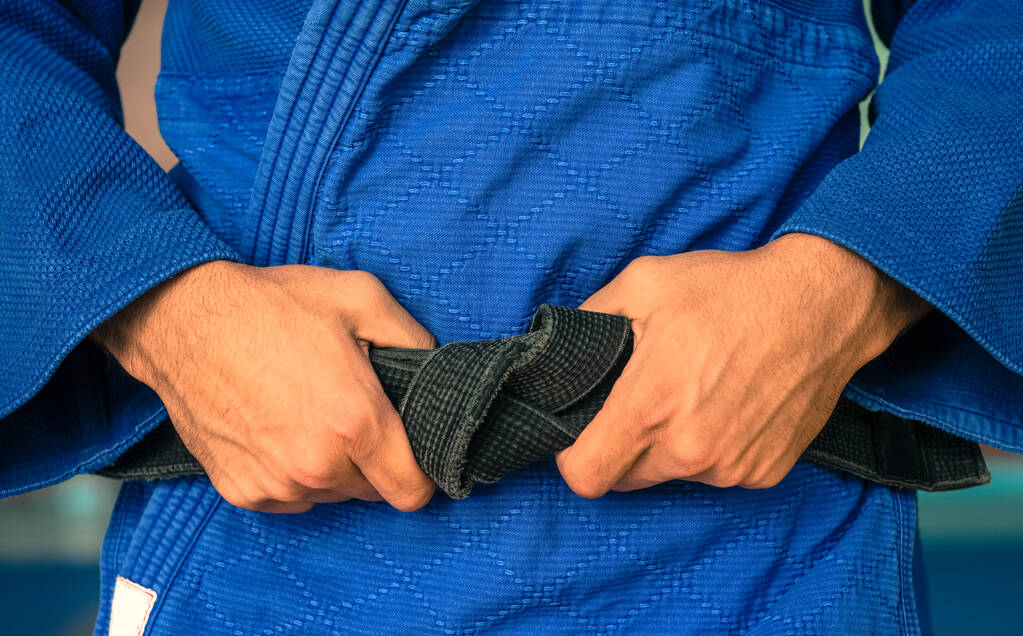Jiu-Jitsu, a martial art known for its practicality and effectiveness, has captured the hearts of practitioners worldwide. Beyond its physical techniques and competitive aspects, Jiu-Jitsu embodies a profound philosophy of personal growth and discipline. A tangible representation of one’s progress in this martial art is the colored belt system, a tradition borrowed from Judo. In this blog, we will delve into the journey of a Jiu-Jitsu belt and what each color represents on this path to mastery.
White Belt: The Beginning
The white belt symbolizes the blank slate upon which the Jiu-Jitsu journey is written. It is a mark of humility, signifying that the wearer is open to learning and eager to absorb the fundamental techniques and principles. At this stage, the focus is on understanding the basics, such as positions, escapes, and fundamental submissions. The white belt is a testament to one’s courage to embark on the Jiu-Jitsu journey, even when faced with the steep learning curve ahead.
Blue Belt: The Foundation
As practitioners progress, they earn their blue belts, indicating a solid foundation in Jiu-Jitsu. At this stage, students have developed a deeper understanding of the art and can effectively execute techniques. They begin to spar with more experienced partners and start to develop their own game. Blue belts often help guide newer white belts, nurturing the growth of the Jiu-Jitsu community.
Purple Belt: The Development of Style
The purple belt represents a significant step in the Jiu-Jitsu journey. By this point, practitioners have honed their skills, developed their unique style, and have a deep knowledge of techniques. Purple belts often begin teaching lower-ranked students and refining their techniques. They are also increasingly aware of the strategic aspects of Jiu-Jitsu, making their moves more calculated and precise.
Brown Belt: The Road to Mastery
Brown belts are often considered to be on the cusp of mastery. They possess a deep understanding of the art, and their techniques are characterized by precision and finesse. At this stage, practitioners are continually refining their game, developing advanced strategies, and helping to shape the Jiu-Jitsu community. Earning a brown belt requires years of dedication and relentless training, making it a testament to one’s commitment to the art.
Black Belt: The Beginning of Mastery
Reaching the coveted black belt in Jiu-Jitsu is a remarkable achievement. It signifies the beginning of mastery, but it is by no means the end of the journey. A black belt represents not only a high level of technical proficiency but also a deep understanding of the art’s philosophy. Black belts are often recognized as instructors and mentors, responsible for passing down their knowledge to the next generation of practitioners.
Coral Belts: The Professors
Beyond the black belt, Jiu-Jitsu has a unique system of coral belts. These belts come in various degrees and represent instructors who have made significant contributions to the art. They are often referred to as professors and play a pivotal role in the Jiu-Jitsu community. These individuals have dedicated their lives to Jiu-Jitsu, both as practitioners and educators.
Red Belt: The Highest Honor
The red belt, often referred to as the 10th-degree black belt, is the highest honor one can achieve in Jiu-Jitsu. It represents a lifetime of dedication and contribution to the art. Red belts are rare, and those who attain this rank are regarded as legends in the Jiu-Jitsu world. They have not only mastered the physical techniques but have also embodied the art’s principles in their lives.

The journey of a Jiu-Jitsu belt is a testament to the practitioner’s dedication, discipline, and passion for the art. Each belt color represents a unique stage in this journey, from the humble beginnings of the white belt to the pinnacle of mastery represented by the black belt and beyond. As practitioners progress through these ranks, they not only develop their physical skills but also embrace the philosophy of Jiu-Jitsu, becoming part of a vibrant and supportive community.
While the journey of a Jiu-Jitsu belt is universal, it is also deeply personal, reflecting the individual’s growth, challenges, and triumphs. Regardless of the color of your belt, the most important aspect of Jiu-Jitsu is the continuous quest for improvement, both on and off the mat. Whether you train in a small academy in your hometown or in a renowned school of Jiu-Jitsu in Maroubra and other locations, the principles and values you learn through this martial art will stay with you for life, guiding you on your journey to self-discovery and mastery.
